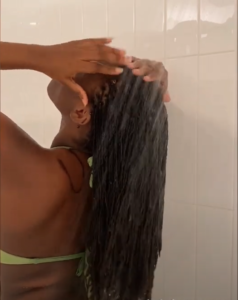Thinking about starting locs but currently rocking relaxed hair? You’re not alone! More and more people are embracing natural textures and choosing to transition to locs as a way to reconnect with their roots (literally). While it’s a big change, transitioning from relaxed hair to dreadlocks is totally possible—with the right approach and a little patience.
Here’s a simple step-by-step guide to help you through the journey.
1. Decide on Your Method
There are a few ways to transition to locs from relaxed hair:
Big Chop: Cut off the relaxed hair and start fresh with natural growth.

Two-Strand Twists or Braids: A popular method for starting locs on relaxed ends.

Comb Coils or Finger Coils: Best on natural new growth; may need to wait for more growth.

Learn more about different starter loc methods to find what works best for you.
If you’re not quite ready for the big chop, you can let your natural roots grow out and begin locking that section while trimming the relaxed ends gradually.
2. Grow Out Your Natural Hair
This part takes time—but don’t rush it! Growing out at least 2–4 inches of natural hair gives your locs a strong foundation. During this period, keep your hair moisturized, avoid heat styling, and trim the relaxed ends as they grow out.
Pro tip: Protective styles like braids or twists can help minimize breakage and make the transition easier.
3. Start the Locing Process
Once your natural hair has grown enough, you can begin the loc journey. Many opt for two-strand twists, braids, or starter coils. Be sure to work with a loctician who has experience with transitioning hair—they can help guide you on the best method for your texture and goals.
4. Maintenance Is Key
As your locs mature, your routine will evolve. At first, avoid over-manipulating or washing too frequently. Use a residue-free shampoo and focus on keeping your scalp clean and your locs moisturized.
Need help finding a trusted loctician? Check out our guide to finding a loctician for tips on what to look for.
Keep in mind: Locs are a commitment. But they’re also low-maintenance in the long run, especially compared to relaxed hair.
5. Embrace the Journey
Every stage of the transition—from the awkward lengths to the frizz—is part of the process. Document your growth, try out accessories, and don’t be afraid to express yourself. Locking after relaxer isn’t just a style change—it’s a journey of self-discovery and confidence. If you’ve heard my story, you’ll know that I only truly accepted myself once I got locs.
Curious about the journey? Click to read my story.
Final Thoughts
Transitioning to locs from relaxed hair is a powerful and personal decision. Whether you go the slow route or dive right in, trust the process. The time goes by so fast.
Ready to start your transition to locs? Leave a comment or share your story below—we’d love to hear from you!
